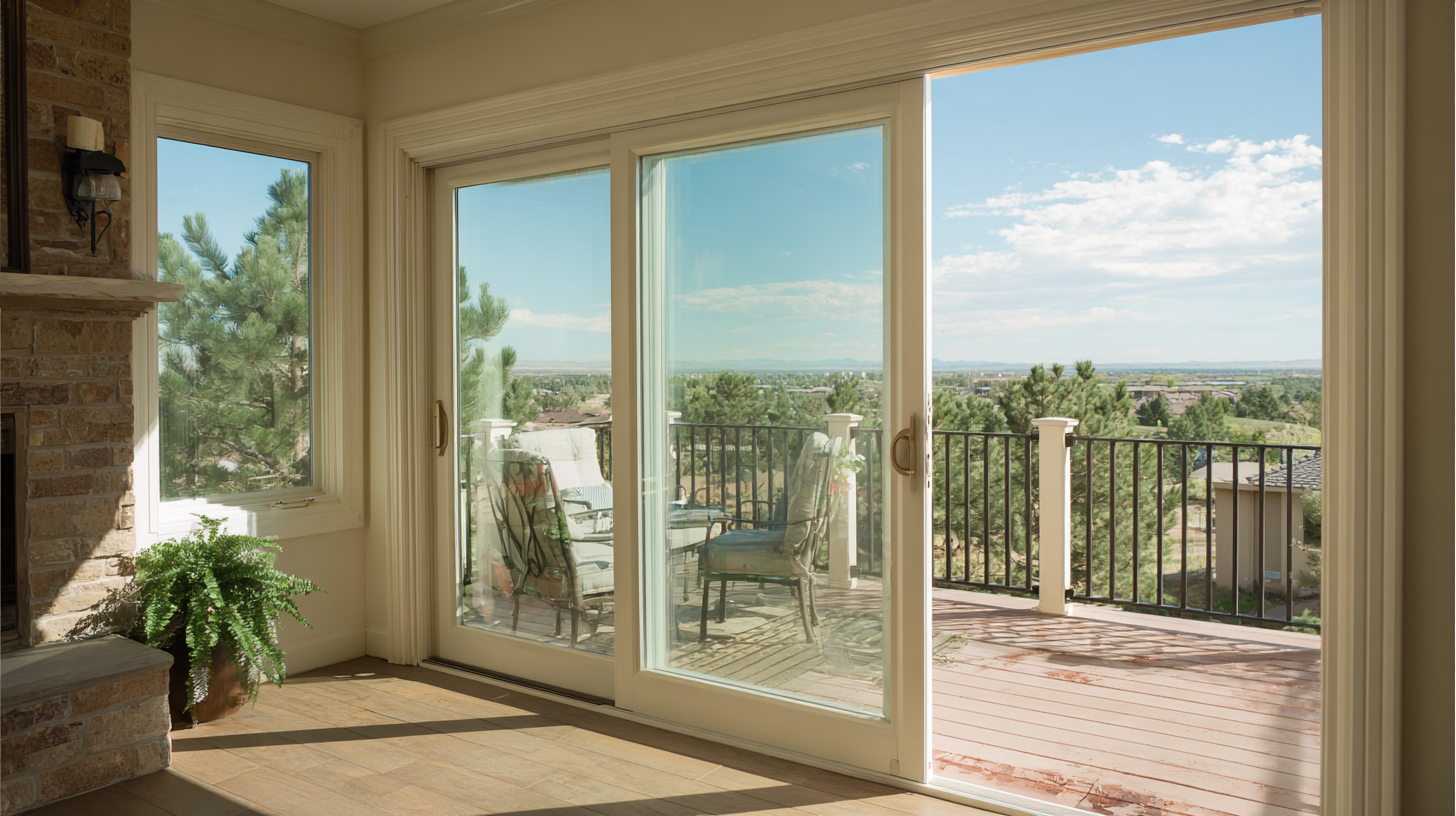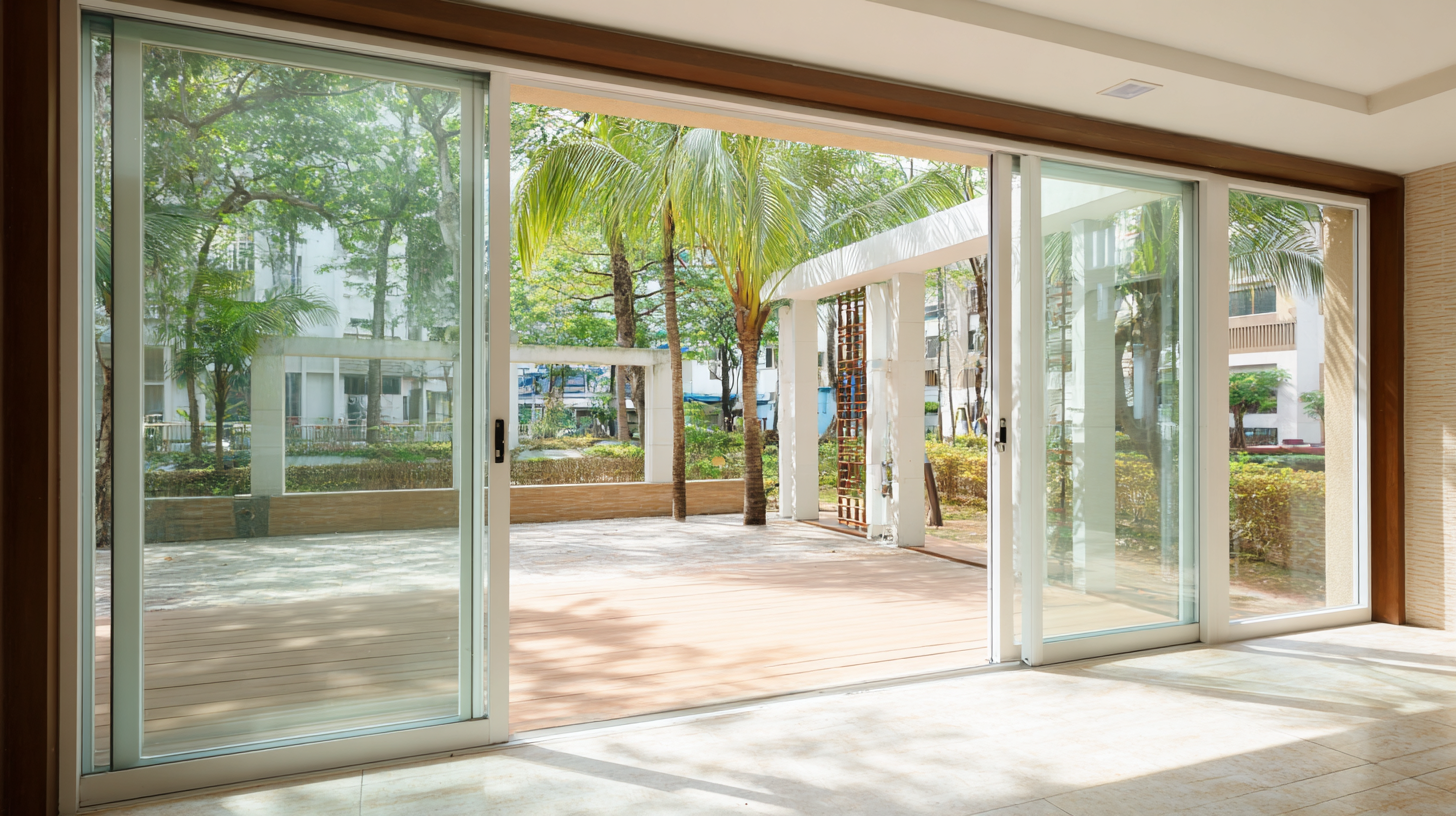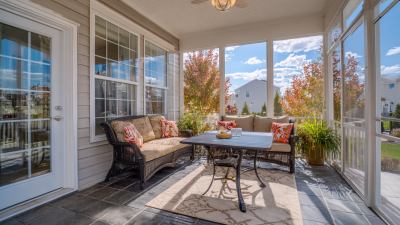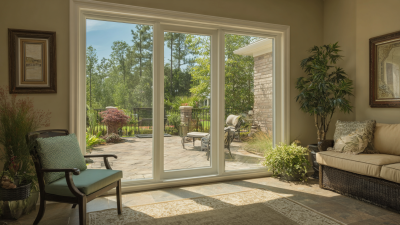How to Successfully Install a Patio Door for Your Home Upgrade
Upgrading your home is a strategic investment that can significantly enhance both its aesthetic appeal and market value. One of the most impactful changes you can make is through patio door installation, which not only improves functionality but also creates seamless integration between indoor and outdoor spaces. According to a report by Remodeling Magazine, homeowners can expect a return on investment of approximately 72% for new patio doors, highlighting their value as an upgrade. In addition, the National Association of Realtors emphasizes that homes with well-designed outdoor transitions are more likely to attract buyers, showcasing the importance of this feature in today's competitive real estate market.

When considering a patio door installation, it's essential to understand the various options available that cater to different styles and budgets. From sliding doors to French doors, the right choice can enhance natural light and improve energy efficiency, with Energy Star-rated models estimated to reduce energy costs by up to 30%. Furthermore, the installation process requires careful planning and execution to ensure optimal performance and longevity. This "Top 10" guide offers valuable insights and tips for a successful patio door installation, aimed at helping homeowners navigate the complexities of this transformative home upgrade.
Essential Tools and Materials Needed for Patio Door Installation
When embarking on the installation of a patio door, having the right tools and materials is crucial for a successful project. According to the National Association of Home Builders, improper installation can lead to a decrease in energy efficiency, which often results in increased utility costs. Thus, preparing adequately can save homeowners from the costly consequences of a poorly installed door.
Key tools you will need include a tape measure for accurate sizing, a level to ensure the door hangs straight, and a drill for securing the door frame. Additionally, a pry bar and a hammer will assist in removing the old door if you are replacing it.
In terms of materials, standard patio doors typically require a wooden or vinyl frame, weatherstripping for insulation, and exterior caulk to seal off any gaps. Research shows that using high-quality materials not only enhances durability but also significantly boosts the home’s value—around 70% of the installation cost can be regained upon resale, according to Remodeling Magazine’s Cost vs. Value report. Thus, investing in the right materials and tools for your patio door installation is essential for a long-term successful upgrade.
Understanding Different Types of Patio Doors and Their Benefits
When considering a patio door installation, understanding the various types available is crucial to enhancing both the functionality and style of your home. Among the most popular choices are sliding doors, French doors, and bifold doors, each offering unique benefits.
 Sliding patio doors are space-efficient and provide a seamless transition between indoor and outdoor areas, making them ideal for smaller spaces. On the other hand, French doors, with their elegant design, create a more traditional look while allowing ample natural light, enhancing the ambiance of your living spaces.
Sliding patio doors are space-efficient and provide a seamless transition between indoor and outdoor areas, making them ideal for smaller spaces. On the other hand, French doors, with their elegant design, create a more traditional look while allowing ample natural light, enhancing the ambiance of your living spaces.
Bifold doors are another trendy alternative, known for their ability to open up completely, creating a striking open-concept feel. This option is excellent for large patios or decks, facilitating a smooth flow from inside to outside. However, it's essential to weigh the pros and cons of each type before making a decision. Factors such as ease of operation, aesthetic appeal, and the specific space you have available should guide your choice. In 2023, the latest door designs underscore the importance of merging functionality with modern aesthetics, ensuring that your patio door complements your overall home upgrade.
Step-by-Step Guide to Measuring Your Space for a Patio Door
When installing a patio door, accurate measurements are critical to ensure a perfect fit. Begin by measuring the width and height of the existing doorframe if you are replacing an old door. Use a tape measure and note the dimensions in three places: top, middle, and bottom for width, and top, middle, and bottom for height. This will help you account for any irregularities in your framing.
Tips: Always measure from the inside of the frame where the door will be installed. Don’t forget to account for any trim or casing that surrounds the doorway. It’s wise to round down to the nearest eighth of an inch to avoid any potential fitting issues.
If you’re constructing a new opening, make sure to determine the overall height and width of the space where the patio door will go. Consider the additional requirements for clearances and leveled flooring.
Tips: Check local building codes for specific regulations regarding door installation, as they may dictate minimum thresholds and structural reinforcements. It is also helpful to use a level during your measurement process to ensure that both the width and height are perfectly aligned.

Common Mistakes to Avoid During Patio Door Installation
When installing a patio door, homeowners often overlook common pitfalls that can lead to costly repairs and dissatisfaction. According to the National Association of Home Builders (NAHB), improper measurements are one of the leading causes of installation issues, affecting nearly 20% of DIY projects. An accurate measurement is critical; even a slight error can cause gaps, leading to energy loss and compromised security. Using a professional installer can mitigate these risks, as experts are trained to take precise measurements and ensure a proper fit.
Another prevalent mistake during patio door installation is neglecting to consider the door's weight and the structural integrity of the opening. A study by the Door and Access Systems Manufacturers Association (DASMA) found that homeowners often underestimate the importance of reinforcing the frame to support heavier materials. Without adequate support, doors may sag or misalign over time, leading to operational failure and increased maintenance costs. Therefore, investing time in ensuring the structural readiness of your home before installation is key to enjoying your new patio door for years to come.
Maintenance Tips for Keeping Your Patio Door in Optimal Condition
Maintaining a patio door is essential not only for its aesthetic appeal but also for its functionality and energy efficiency. According to a report by the American Institute of Architects, well-maintained patio doors can save homeowners up to 15% on their energy bills. Regular maintenance tasks, such as cleaning the tracks and ensuring the rollers are free of debris, can greatly enhance the door’s performance. Homeowners should ideally inspect and clean their patio doors every three months to prevent build-up that can cause operational issues.
Additionally, weatherstripping plays a pivotal role in preserving the integrity of your patio door. The U.S. Department of Energy states that proper sealing can reduce heating and cooling costs by up to 30%. Regularly checking and replacing worn weatherstripping helps maintain optimal energy efficiency and enhances comfort levels indoors. Furthermore, lubricating hinges and locking mechanisms at least twice a year can prevent rust and ensure smooth operation, prolonging the life of the patio door while providing security.
Patio Door Installation and Maintenance Trends
Related Posts
-

The Ultimate Guide to Choosing and Installing Your Perfect Patio Door
-

The Ultimate Guide to Choosing the Best Patio Door Installation for Your Home
-

Essential Tips for a Smooth Patio Door Installation Experience: Expert Insights Revealed
-

Enhancing Home Energy Efficiency through Expert Window and Door Replacement Strategies
-

Innovation in Home Windows Industry at 2025 China Import and Export Fair
-

Maximizing Energy Efficiency: The Impact of Quality Windows and Doors on Home Insulation
